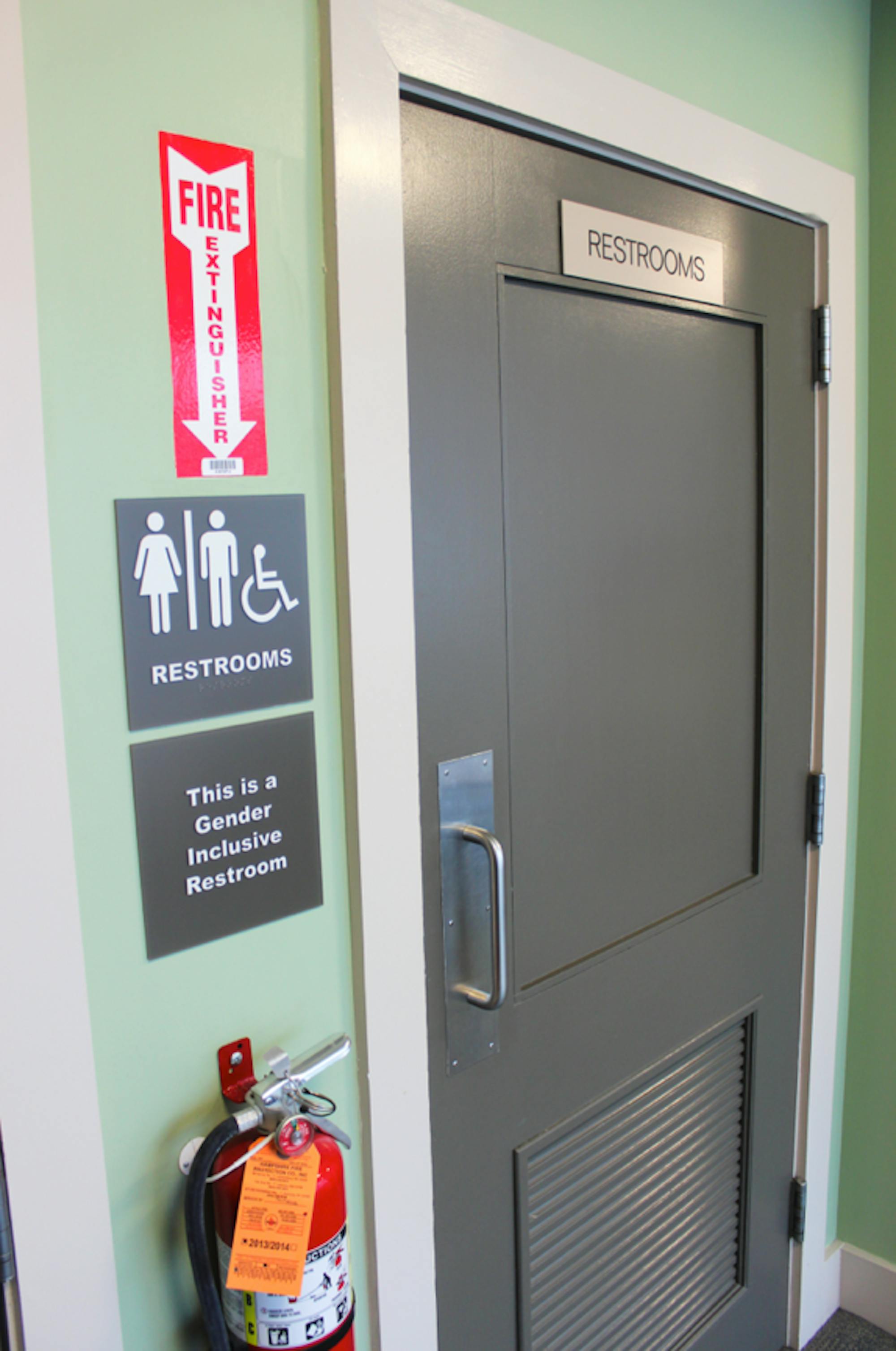As soon as this fall, residential buildings at the College may gain gender-inclusive restrooms, starting in Topliff Hall, vice president of campus planning and facilities Lisa Hogarty said. The bathrooms labeled gender-inclusive are open to any person, regardless of gender identity, she said.
Earlier this summer, the College’s facilities, operations and management office changed the “male” or “female” signs in some bathrooms in the Class of 1953 Commons and the Collis Center to signs labeling them as “gender-inclusive.”
These first signs are a trial run for a program that will start installing similar signs in buildings across campus, Hogarty said.
Center for Gender and Student Engagement director Reese Kelly contextualized the changes as a part of a global shift toward opening up formerly gender-segregated spaces.
The bathrooms will increase access for many people, Kelly wrote in an email, including those who need assistance from someone of a different gender, families with small children and individuals who are gender non-conforming.
Kelly also noted the importance of the language used in the signs.
“People don’t leave their gender at the door when they walk into a ‘gender neutral’ bathroom,” Kelly wrote. “Gender is ever-present and it is important that language reflects this, which is why gender-inclusive is a more appropriate replacement.”
The concept should not be new to most students, Kelly wrote, because most restrooms in family homes are also gender-inclusive.
Depending on feedback, Hogarty said that the program may continue to be implemented on the rest of campus.
So far, the College has not recieved much feedback, Hogarty said, noting that if the response remains muted the program will likely move forward.
The impetus for the project came from meetings that FO&M had with a campus group called the Dartmouth Action Collective, Hogarty said.
Hogarty said that between 30 and 40 percent of campus buildings could be equipped with gender-inclusive bathrooms without any construction. In these buildings, students would have access to at least one men’s, one women’s and one gender-inclusive bathroom.
The main concerns for any bathroom changes, Hogarty said, are national and state laws regulating the number of fixtures — toilets, showers and sinks — per expected resident.
Hogarty said that FO&M will likely propose expanding the program as part of a comprehensive building renewal package presented to the College’s Board of Trustees in the next five or 10 years.
The program, she hopes, will be a part of comprehensive change across the Ivy League.
“It’s nice for Dartmouth to be a leader in social change, along with the other Ivies,” Hogarty said.
Akash Kar ’16, cochair of IvyQ, an Ivy League LGBTQ conference, said the bathrooms are an important step but noted other areas in which Dartmouth lagged behind.
“Until this pilot, we had no multi-stall gender-inclusive bathrooms on campus,” Kar said. “We still have no multi-stall gender-inclusive bathrooms in residence halls.”
Kar said that all bathrooms on campus could become gender-inclusive with little to no retrofitting if they were simply relabeled as such.
“Gender inclusivity is just saying that anyone can use the bathroom,” he said. “Regardless of your gender, it’s simply a toilet. If there isn’t an option to have all three — men’s, women’s and gender-inclusive, the restroom should be gender-inclusive.”
Kar said that he does see merit in some arguments for having some single-sex bathrooms, but added that it should be more important to feel safe and comfortable in a bathroom.
Other Ivy League schools, including Brown Universtiy and Princeton University, have posted information on the location of gender-inclusive bathrooms online.
The Brown University LGBTQ Center lists 115 facilities on its website, excluding those in residence halls.
When the IvyQ Conference comes to campus this fall, it will be important for attendees to have gender-inclusive bathroom options, Kar said.




